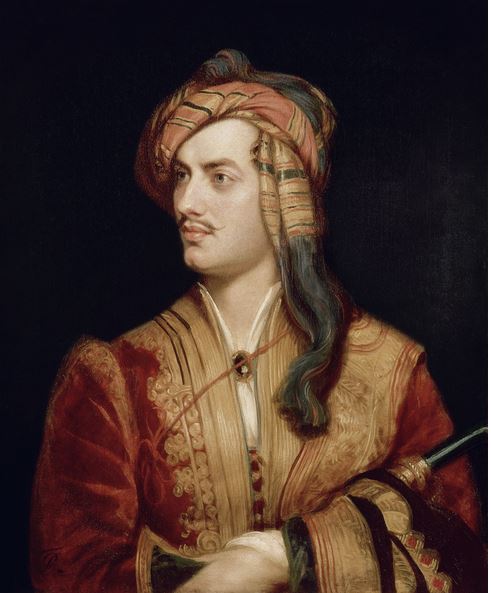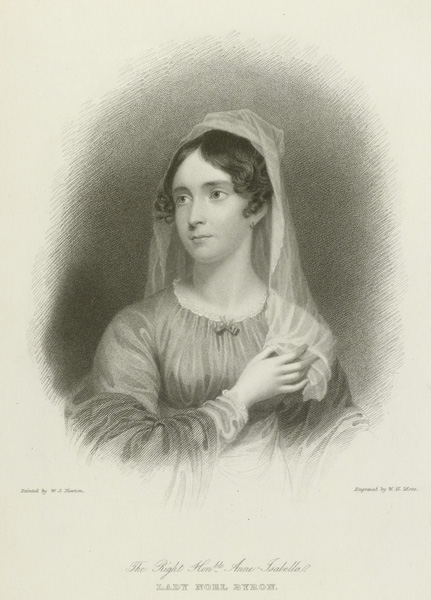Published 29/06/2018
Newstead Abbey in Nottinghamshire, was formerly an Augustinian priory. Converted to a domestic home following the Dissolution of the Monasteries, it is now best known as the ancestral home of Lord Byron.
A brief history of Newstead Abbey
Newstead Priory (as it was known then), was built by King Henry II of England in 1170, as penance for the murder of Thomas à Beckett, the once Archbishop of Canterbury. It underwent various extensions in the 13th and 15th centuries, and housed up to 13 monks until it ceased to function as a Priory in the 1539 during the Dissolution of the Monasteries.
Sir John Byron of Colwick in Nottinghamshire was granted Newstead Abbey by Henry VIII of England on 26 May 1540 and its conversion into a country house commenced.
Newstead Abbey and the 6th Lord Byron
Although Newstead Abbey is best known for having been the home of the 6th Lord Byron, it had been the Byron family home for over 200 years before he inherited it. Unsuprisingly the flamboyant Romantic poet was not the only personality in the family. Before inheriting the Abbey. his great uncle William lived there. Nicknamed the Wicked Lord or the Devil Baron, he had a penchant for wild spending and firing real cannons at staff who displeased him. He built gothic follies and created lakes in the grounds of the Abbey in which he recreated naval battles. Heavily in debt, he eventually had to flee his home after killing his cousin in a duel, ending his days in France.
Newstead Abbey was then passed on to the 5th Lord Byron's great nephew the famous Romantic poet, then called George Gordon, soon to become the 6th Lord Byron. Lord Byron was only 10 years old when he inherited the Abbey in 1798, and only moved in with his mother in 1808 when he turned 21 years old. In fact, Lord Byron only lived there for a period of for 2 years, and only 6 months as a permanent resident.

Albanian Dress,1813 (oil on canvas), Thomas Phillips (1770-1845) /
National Portrait Gallery, London, UK
Lord Byron liked to spend money and he liked to party. When he left Trinity College, Cambridge he was £10,000 in debt. He would throw wild fancy dress parties at Newstead where the guests would dress (appropriately) as monks.
As a major celebrity of his day (something he worked very hard at), he suffered from bad press just like modern day celebrities. Newstead became a refuge for him, somewhere he could escape prying eyes.
When Byron inherited the Abbey it was in bad repair. His view of Newstead was as a romantic ruin, comparable to the decline of his family name. He wrote of it:
Thro' thy battlements, Newstead, the hollow winds whistle;
Thou, the hall of my fathers, art gone to decay.
Lord Byron, ‘On leaving Newstead Abbey’ (1803)
He spent a lot of money on it, but the changes he made were mainly cosmetic, leaving the major structural demage unrepaired and it soon returned to its original state of disrepair.
Boatswain the beloved dog
While at Newstead Byron had a beloved pet dog, a Newfoundland called Boatswain. Boatswain died in 1808 after becoming infected with rabies, and was buried at Newstead . In true British canine-mad style a monument was made in his honour, on which was inscribed Byron's Epitaph to a Dog (which has since become one of his best known works):
Near this Spot
Are deposited the Remains
of one
Who possessed Beauty
Without Vanity,
Strength without Insolence,
Courage without Ferosity,
And all the Virtues of Man
without his Vices.
This Praise, which would be unmeaning flattery
If inscribed over Human Ashes,
Is but a just tribute to the Memory of
"Boatswain," a Dog
Who was born at Newfoundland,
May, 1803,
And died at Newstead Abbey
Nov. 18, 1808.
The monument is even bigger than Byron's monument on the Newstead grounds.
Marriage, children and leaving Newstead
Lord Byron had a many love affairs with both men and women in his life time and did not show much interest in settling down. However increasing debt forced his hand, and in January 1815 Lord Byron married heiress Anne Isabella Milbanke. Lady Byron was a brilliant woman and gifted mathematician but was also very moral and religious, therefore a strange match for the ammoral and agnostic Byron. Their marriage was not a happy nor very long one. Byron's colourful romantic life caused his wife a lot of concern, particularly the rumours of an ongoing incestuous love affair with his half-sister Augusta Maria Leigh. Eventually she declared Lord Byron insane and in January 1816 - only a year after they were married - Anne began proceedings for a legal separation. The scandal of the separation, as well the rumours of his affair with Augusta and his mounting debts, caused Byron to leave Newstead Abbey and Britain forever. He would never return. He died in Greece in April 1824 after joining the Greeks in their fight for independence from Ottomon rule.

(colour engraving)., Alfred-Edward Chalon (1780-1860) /
Private Collection / Prismatic Pictures
Before they separated, Anne and Lord Byron had a child, a girl called Ada, who was born in December 1815. She was to be Byron's only legitimate child. Augusta Ada King-Noel, Countess of Lovelace (née Byron) like her mother, grew up to be a brilliant mathematician. She became chiefly known for her work on Charles Babbage's proposed mechanical general-purpose computer, the Analytical Engine. She was the first to recognise that the machine had applications beyond pure calculation, and published the first algorithm intended to be carried out by such a machine. As a result, she is sometimes regarded as the first to recognise the full potential of a computing machine and the first computer programmer. Although she never met her father, she felt very close to him, and requested that she be buried next to him upon her death.
Find out more
See more images from Newstead Abbey here
Bridgeman Images | Image. It’s Everything
Are you looking to license art, culture and historical images? Bridgeman Images offers the highest resolution rights managed images for licensing. Please contact us for free image research or to learn more.
Sign-up to our mailing list to receive all the latest news on artists, museums and collections.








